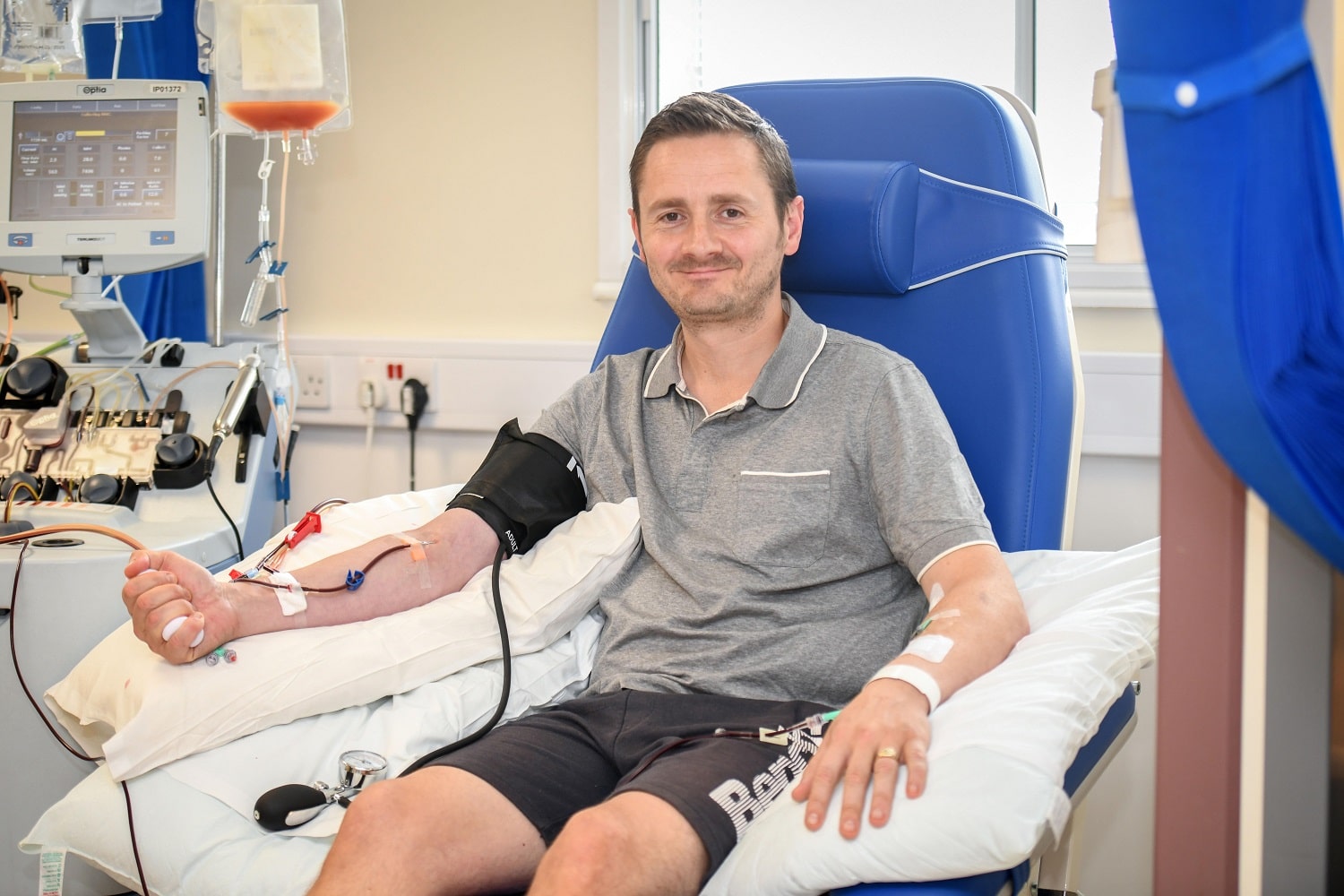Donating stem cells
Discover the different ways to donate stem cells if you are matched with a patient.
There are two ways you can donate stem cells. We will discuss these with you if you are matched and might suggest a preferred method, but the final choice is always yours.


Step 1 - getting you ready to donate
In the 4 days leading up to your donation, you will receive injections to gently increase the number of stem cells in your bloodstream. You have a choice in how they are administered:
- Do it yourself: A nurse will visit you at home or work once to train you on how to give yourself the injections (this is what most donors choose).
- Nurse: If you prefer, a nurse can visit you to give you all 4 injections over the 4 days.
You can choose the option that works best for you.

Step 2 - your donation
At one of our specialist centres, you can relax while connected to a special machine (similar to donating platelets or plasma, if you've done that before).
It separates the stem cells from your blood and returns the rest back to you.
Just sit back, relax, and maybe even watch your favourite show.

Step 3 - done
You're all finished and you've helped to save a life.
Sometimes we might ask you to come back the next day to donate again to make sure we collect enough stem cells to treat the patient.
But don't worry, it's the same easy process and we'll reimburse approved expenses or loss of earnings because of your donation.
Stem cells from bone marrow
Most donations are taken from blood, but in roughly 10% of cases it may be best to take them directly from your bone marrow in a short procedure in hospital.
This lifesaving method involves collecting stem cells from your hip bones using a thin needle. To make sure you're comfortable, this happens under a general anaesthetic.
After your donation
You've done something amazing but now your body needs to recover.
Take time to rest and recuperate. We'll keep in touch to make sure you're feeling well and haven't experienced any unexpected side effects.
If you need to take time off work for the donation, we'll help you get reimbursed for approved expenses. These details will be covered in your medical interview.
It generally takes a few weeks to a couple of months for your body to replace the stem cells that were collected during donation. This depends on the type of donation.
How safe is stem cell donation?
Stem cell donation is very safe. However, no medical procedure is entirely without risk.
Both forms of stem cell collection may involve some temporary discomfort and any small risks involved will be fully explained before you donate.
